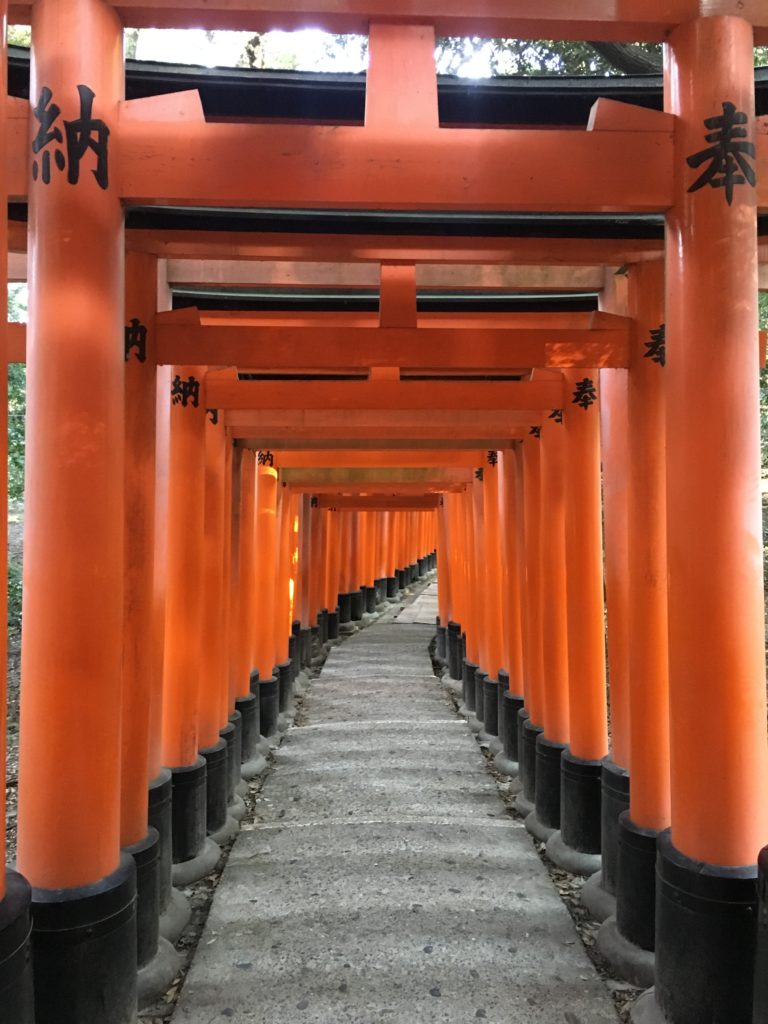Welcome to Kyoto
Another of Japan’s ancient capitals. Blessed with some of the countries most stunning temples, kimono wearing locals and tourists and wonderful cuisine, it is no wonder that Kyoto is a popular place for anyone visiting or living in Japan.
Tourist numbers to Kyoto are growing at an ever increasing rate. As a result this can feel like the city is swamped by visitors. Sadly the large numbers of tourists are causing problems. Follow the customs and rules according to the signs that are displayed and if you’re not sure ask. Sadly when we visited we saw a lot of tourists unable or unwilling to do this. A crying shame in one of Japan’s most beautiful cities.
We have a “know before you go” article on Japan, with a few additional tips on Kyoto for you to check out!
Getting There and Away
Kyoto is well serviced by all manner of trains. Most tourists tend to come from Tokyo, Osaka, Hiroshima or Nagoya. Japan’s excellent railway network means that Kyoto is an excellent place to base yourself to explore the Kansai region, with Osaka and Nara around an hour away.
The nearest airport is Osaka international airport which has excellent domestic and international links. The airport also has a bus service that can take you straight to Kyoto.
We have an additional article on budgeting and saving money in Japan with a few Kyoto-specific pieces. In addition we have a guide for getting the most out of your JR pass and purchasing the most cost effective option.
Getting Around
Kyoto has an excellent metro and JR network however for exploring a number of temples and districts such as Gion and North and South Higashiyama buses are the way to go. Kyoto’s extensive and convenient bus network can take you all over the city. Most guesthouses provide information on how to access all major sights by bus and train from the surrounding area.
There are also all-day bus tickets that cost 500 yen. Each single journey costs 200 yen, so if you take 3 buses you will have saved money. With Kyoto’s sights being spread all over the city it is a worthy investment. All-day bus tickets can be brought from guesthouses and hotels or on buses themselves.
Where to stay
Sights in Kyoto are much more spread out than in the other cities we visited in Japan. We stayed west of the city centre close to Tambaguchi station, part of the cities JR network. Here we had access to buses that took us to Northern and Southern Higashiyama and Gion districts, as well as up to Kinkaku-ji temple. In addition We could catch the JR up to Arashiyama and down to Kyoto station to switch trains to go to the Inari shrine. It is a quiet area and there were not a huge number of food options close by, but the the transport links made it a winner with us. If you’re looking for somewhere a bit livelier, the areas around Gion, Southern Higashiyama and downtown Kyoto are you best bets. However do be aware that staying in these areas is much more expensive than staying slightly outside of the city centre.
Where to eat
Kyoto is famous for it’s kaiseki cuisine, the quintessential definition of high class Japanese dining. However this does not come cheap, and we were definitely priced out of it. The city centre has plenty of restaurants and izakayas serving excellent Japanese food. Outside of the centre there are still plenty of eateries to be found and the price is usually noticeably cheaper.
Is it busy?
In short, yes. This is one of Japans most popular destinations for both local and foreign visitors. As a result large groups of tourists are common. However it is surprisingly easy to avoid the crowds, due to the fact most tourists congregate around Arashiyama, Gion and Southern Higashiyama. Outside of these areas the tourist numbers diminish. One sure way to avoid the tourists is to visit sights early in the morning. For example visiting the Inari Shrine at 6am will mean that you will avoid the hundreds of tourists that you will encounter at the entrance as you head back to the train station.
Things to see and do
There is a huge amount to see in Kyoto and the chances of fitting in everything are pretty slim. Safe to say there is a lot that we just didn’t have time for., so do not take our list as an exhaustive guide for everything to do. Also it is worth noting that only some of Kyotos temples are free. The vast majority you need to pay to enter, and as a result the costs can quickly add up.
Also be advised that you will need to take you shoes off before entering the vast majority of the temples in Kyoto, therefore wearing flip flops or even just taking a pair with you is recommended.
Northern Kyoto
Kinkaku-ji: One of Kyoto’s most popular temples, as a result it is usually pretty busy. However it is absolutely stunning and it definitely makes the crowds worth it. There are a few other small temples in the surrounding area that are also worth exploring. Hidden in the backstreets these temples are substantially quieter than the areas big hitter.
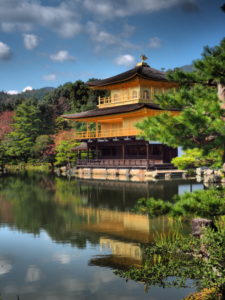
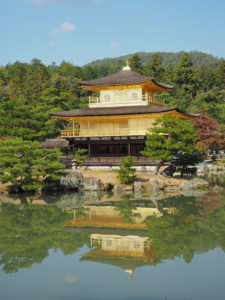
Arashiyama Bamboo Grove: This is an image that springs to mind when anyone mentions Kyoto. It is incredibly beautiful, and as a result it can also be very busy. The chances of finding a place of quiet serenity are pretty low in the grove itself, but it is definitely worth a visit.
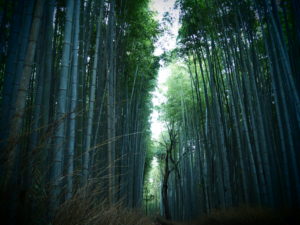
As you walk through the grove you will come to a train station, from here there are some quiet country lanes that are well worth exploring. Also this is an excellent area to escape the crowds.
The area surrounding the Arashiyama bamboo is full of touristy shops and temples. This area also has numerous kimono rental shops, so if you’re planning on getting kitted out in Japans most famous clothing this could be the place to do it. The area around the Katsura River is another excellent area to escape the crowds.
Southern Higashiyama
Kiyomizu-Dera: One of Kyotos biggest temples, this sprawling complex at the southern boundary of Southern Higashiyama is a fantastic place to start in Kyoto. This temple can get especially busy. Follow the path out of the back of the temple heading south east and you will come to another beautiful, deserted temple.
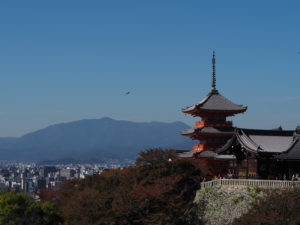
Sannenzaka: A beautifully long alley sculpted through the centre of Gion is a lovely place to wander and explore. There are plenty of shops selling souvenirs and delicious Japanese snacks. There are plenty of restaurants here, however naturally prices here are noticeably higher than in other areas of the city.
Kodai-ji: At the end of Sannenzaka you will find a couple of temples hidden up a staircase to the right of the path. One of these is Kodai-ji. Beautiful gardens and with far fewer tourists than some of the busier temples it is a wonderful place to escape and find your own little piece of zen.
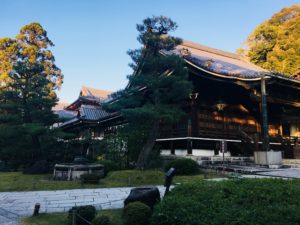
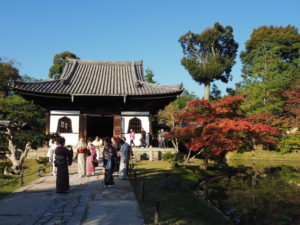
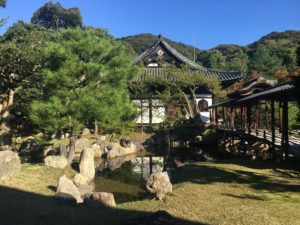
Maruyama-koen: A garden littered with little shrines close to Kodai-ji.
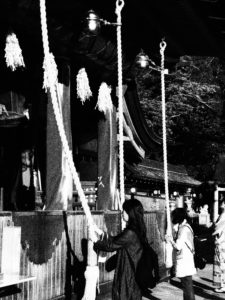
Northern Higashiyama
Philosophers Path: A beautiful path along a canal in Northern Higashiyama beginning a 10 to 15 minute walk from Keage subway station. The path finishes up at Ginkakuji. One of Kyotos finest temples. Surprisingly we encountered a handful of tourists when we did this. A stark contrast to Gion and the area surrounding Kiyomizu-Dera . The route has a number of temples scattered along it. Some of which are free.
Nanzen-ji: A huge temple close to the beginning of the philosophers path. This spectacular temple is surprisingly quiet, giving you more of chance to channel your inner zen. This temple is free, however the gardens at the back cost 300 yen per person.
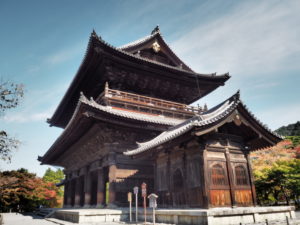
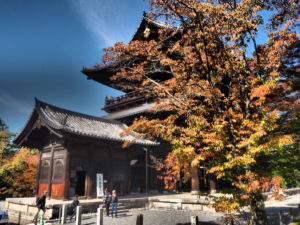
Honen-in: A leafy little temple at the end of the philosophers path. Although lacking the spectacular of other temples in the city, it is definitely worth a visit.
Ginkaku-ji: One of Kyotos biggest attractions. This stunning temple embodies everything that is Kyoto. Sublime architecture and beautiful gardens make this an absolute must. However this temple can be quite busy. You’re better of visiting early in the morning or later in the afternoon.
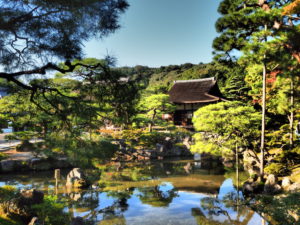
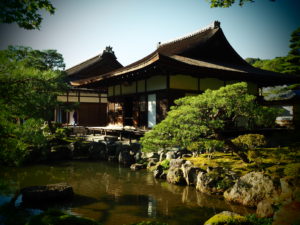
Southern Kyoto
Inari Shrine: This vast collection of temples, shrines and gates is one of Kyotos most breath taking experiences. Head to Inari station from Kyoto station, and the entrance is just across the road from the stations exit. The journey takes just over 5 minutes and trains are very regular. At the entrance you will be greeted by a variety of temples and shrines before a path leads out of this initial temple complex and onto a long path heading uphill. It is here you will begin to pass through the endless stream of tori gates for which the inari shrine is most well known. Along the way the gates are punctured by small shrines and temples, all in perfect condition (it is Japan after all).
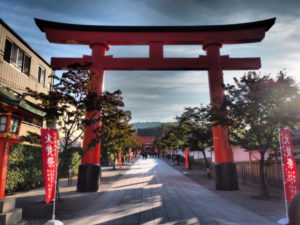
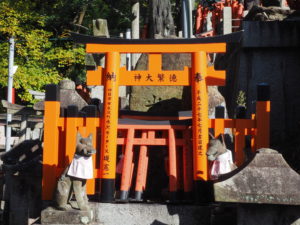
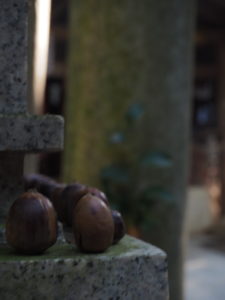
This is probably the most popular place in Kyoto. If you don’t believe us get there around 9:30 and watch the madness unfold. If you get to the entrance between 6-7am you will have the route almost entirely to yourself. The site is open 24 hours, so you can go any time you wish, but the earlier you go, the less chance you will have to deal with huge numbers of tourists and marauding tour groups.
Central Kyoto
Backstreets: Central Kyoto has a fair few quirky little backstreets if that’s your fancy. Hiding small bars, restaurants and izakaya’s there are plenty of gems waiting to be uncovered. The backstreets north of Gojo-dori are an excellent place to wander Kyotos narrow alleyways.
Nishiki Market: A huge market over flowing with everything from souvenirs to cosmetics. A great place to people watch and hit up some of Kyotos amazing arcades.
